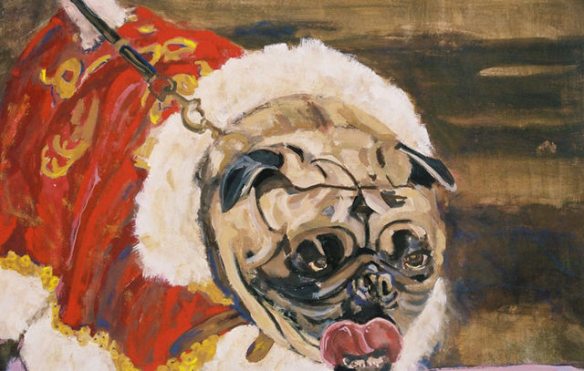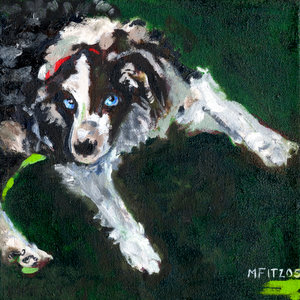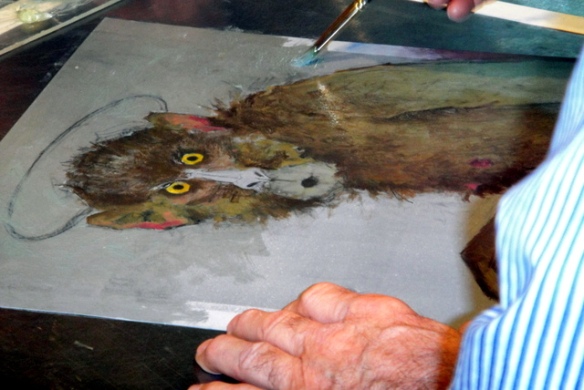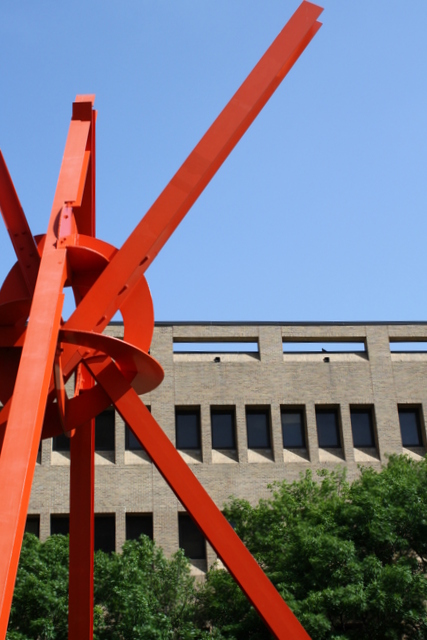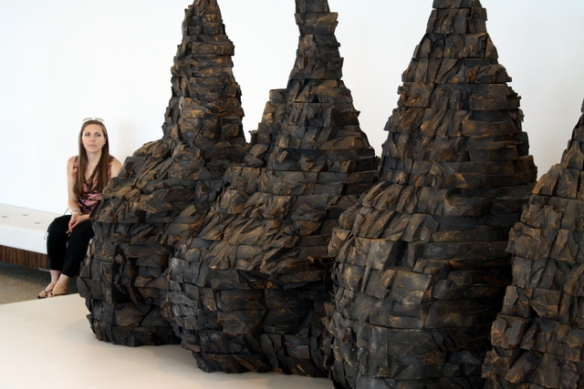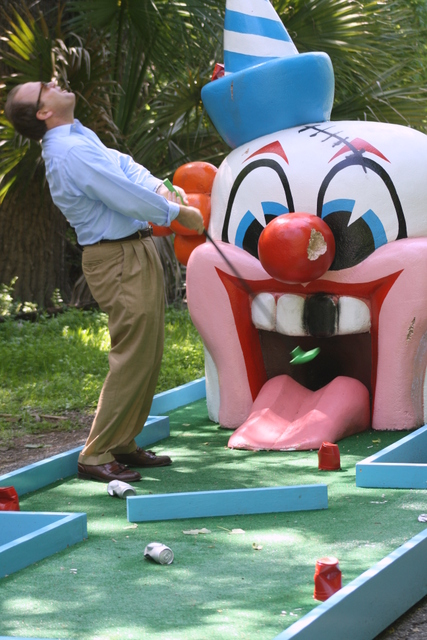I’m really pleased when people tell me they enjoy living with my art. So, at times I’ll post images of my clients and friends with my paintings.
Here’s Diane Collier (AIA) with a painting from my “Emergent Series,” a body of work that explores and captures interesting people and faces that fascinate me. This one is titled “Finding Malcolm Gladwell,” and hangs in her very contemporary townhouse.

Painting: “Emergent Series: Finding Malcolm Gladwell” | oil on canvas | | 72″ x 60″ | Collier Private Collection (photo: Brenda Gail |thestudio@brendagailofdallas.com)
Tary Arterburn, landscape architect and co-founder of Studio Outside, and Diane relax together in her living room with “Malcolm G.,” author of Outliers and The Tipping Point, and other recognizable faces like that of William Dafoe and Winston Churchill.

Diane and Tary in living room with “Emergent Series: Finding Malcolm Gladwell” (photo: Meg Fitzpatrick)
Another work from the “Emergent Series” hangs in the Ernst’s Carrollton home which overlooks a beautiful lake. Warren and Susan stand before “Finding Philip Glass.” Besides composer “Philip G.,” one of the faces I drew in this composition belongs to Henry Lewis Gates, MacArthur Fellow, Professor and Director of the W. E. B. Du Bois Institute for African and African-American Research at Harvard University. Dr. Gates peeks over their shoulders.

Painting: “Emergent Series: Finding Philip Glass” | acrylic on board | 49″ x 25″ | Ernst Family Private Collection (photo: Meg Fitzpatrick)
And then, there are commercial uses for my paintings. For the first official photo of Jan Blackmon (FAIA), the new Executive Director of the AIA Dallas Chapter, my paintings were used on the set for her photo shoot.

Photo shoot set for newly appointed Director of AIA Dallas Chapter: Painting: “Yo Yo Ma: Proven Axel Path” | acrylic on canvas | 46″ x 45″ (photo: Brenda Gail |thestudio@brendagailofdallas.com)
To wrap up today’s post, Gus Hinojosa (AIA), Principle at Hinojosa Architects and Interior Design, commissioned me to create large paintings for a Dallas Bank’s Board Room. When the bank moved their corporate headquarters from North Dallas to Uptown, the CFO hired Gus and his firm to design the new offices. Gus, his team and the bank were all part of the review process, looking at preliminary studies and approving the final concept. In the end, the bank owns original art that was made specifically for this very public space, the executives and their visitors.
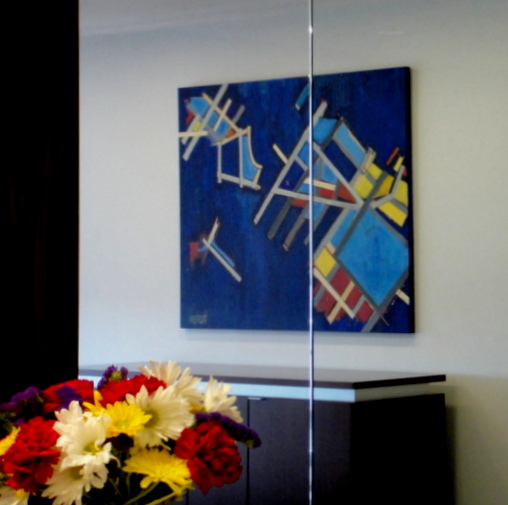
Painting: “Aerial” | acrylic on canvas (2012) | 48” x 60”
One of two paintings in the Board Room at a Dallas Bank’s Corporate Headquarters
Architect: Hinojosa Architecture and Interior Design
(photo: Meg Fitzpatrick)
For those of you who live with my art, please send me JPEG images. I’ll use them in future posts.
…until Sunday, May 6th.


